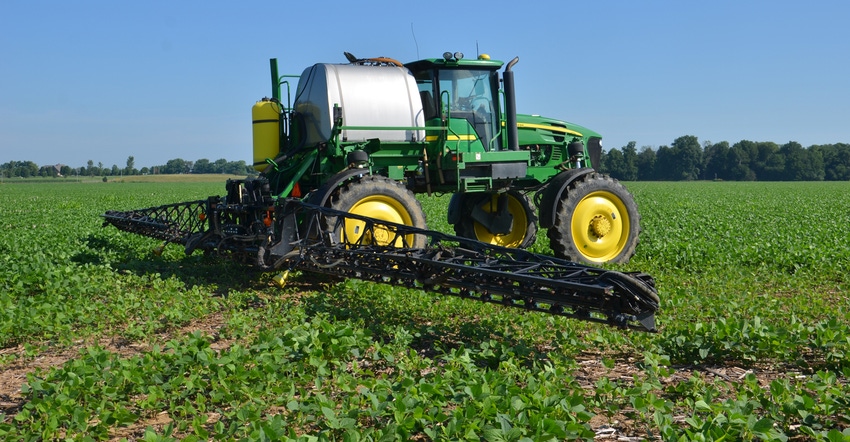
Speculation about what the U.S. EPA might do with the dicamba registration ran rampant in recent months. Most observers expected some sort of renewed registration — maybe for one year, maybe for two, and likely with more label restrictions.
Some called for limiting the herbicide to burndown applications. Others suggested hours for the application window be severely limited. Still others expected EPA would tweak wind speeds.
EPA ended the speculation on Oct. 31, announcing an extension of the label through the 2020 application season. Herbicides receiving extensions include XtendiMax from Bayer, Engenia from BASF and FeXapan from DowDuPont.
Most people say EPA’s further restrictions seem minor. The window for application has changed from sunrise to one hour after sunrise, and from sunset to two hours before sunset. Wind speed limits weren’t changed. Application is restricted to 45 days after planting soybeans or the R1 growth stage — whichever comes first; and 60 days after planting cotton or midbloom — whichever comes first. For soybeans, R1 occurs whenever the first bloom appears at any node.
Training and certification
Perhaps the biggest change snuck under the radar. Annual training for all applicators will be required as in 2018, and the products remain restricted-use products. What’s different is that these products can now be bought and applied only by certified applicators. Before, someone without certification could apply the product if he or she worked under the supervision of someone with certification.
Bayer spokespeople note that these changes may seem like a bigger deal in certain parts of the country. Some states may have already required things be added to the label this year.
State by state
The real picture of what it takes to buy and apply dicamba on soybeans or cotton may depend upon what your state regulatory agency does next. Those announcements should come soon, if they haven’t already. Stay in touch with Extension staff and state specialists to make sure you know final state requirements. Bayer, for example, applied for labels in 34 states. Each state must approve labeling before the final rules within its jurisdiction are known.
Some states may make changes compared to 2018. Indiana, for example, conducted massive mandatory required training for anyone applying dicamba in 2018. Indiana Pesticide Administrator Dave Scott announced that such training would not be repeated this year. Farmers in Indiana must still be trained, but it will be up to the companies manufacturing the products to train them.
2018 results
Drift and damage complaints were still filed after dicamba applications in 2018. In fact, in some states, there were slightly more official complaints than in 2017.
Bayer reported fewer incidents. Company officials said more than twice as many acres were planted to Xtend crops in 2018 vs. 2017. Bayer’s estimate is 60 million acres were planted nationwide to Xtend crops. However, when asked to break that down into soybean vs. cotton acres, officials said those numbers weren’t available.
Mixed reactions
Not everyone is happy with EPA’s decision to extend the dicamba registration. Steve Smith, director of agriculture for Red Gold, an Elwood, Ind.-based tomato processor, issued a statement as chairman of a group called Save Our Crops Coalition. His comments began, “This is an unacceptable ruling.” He added, “Dicamba is dicamba, and as of now, it moves where it is not supposed to go. It doesn’t move every time, but even if it is only 3% or 5% of the applications [that] have issues, would you get on an airplane with a 3% chance of failure?”
About the Author(s)
You May Also Like




